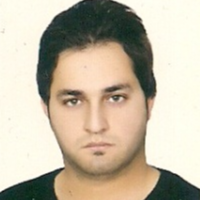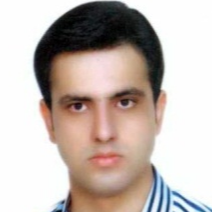International Journal of Intelligent Systems and Applications (IJISA)
IJISA Vol. 5, No. 8, 8 Jul. 2013
Cover page and Table of Contents: PDF (size: 666KB)
Artificial Intelligence SVC Based Control of Two Machine Transmission System
Full Text (PDF, 666KB), PP.1-8
Views: 0 Downloads: 0
Author(s)
Index Terms
Static var Compensator with Fuzzy Logic Controller, Two Machine Transmission System, Fuzzy Logic Controller, Power System Stabilizer, Static var Compensator
Abstract
The main target in this paper is to present, design fuzzy logic controller (FLC) applied to static var compensator (SVC) on two machine transmission system to improve transient stability and rapid damping oscillations of synchronous generators, when power generators sudden changes occur.stability that also played important role in power systems. static var compensator with fuzzy logic controller (SVCFLC) is a new control strategy can help improve transient stability.The effect of three phase fault causes instability on power system. By and large, it is very difficult to control machine speeds ,rotor angle and voltage during three-phase fault.SVCFLC is a voltage stablizer using three static var compensator which are controlled by SVC with fuzzy logic controller(FLC).The FLC is an effective device for transient stability of two-mashine transmission system. The nonlinear model dynamic formulation problem in unstable system can be solved by using artificial intelligence theorem. Fuzzy logic theory is used to improve the system stability . simulation results of three-phase fault in power system show that SVCFLC caused to increase the stability and damp out the oscillation of machine, compared with effective of SVC in the presence of power system stabilizer(PSS).
Cite This Paper
Reza Bayat, Hamed ahmadi, "Artificial Intelligence SVC Based Control of Two Machine Transmission System", International Journal of Intelligent Systems and Applications(IJISA), vol.5, no.8, pp.1-8, 2013. DOI:10.5815/ijisa.2013.08.01
Reference
[1]Anderson, P.M., Fouad, A.A. Power system control and stability.The Iowa State University Press, 1977.
[2]Cegrell,T.Power System Control Technology.Prentice-Hall Intern.(UK),1986.
[3]Zhou EZ. Application of Static Var Compensators to increase power system damping. IEEE Trans Power System 1993;8(2):655–61
[4]CIGRE Task Force 38-01-02 Static VAR compensators 1986.
[5]IEEE recommended practice for excitation system models for power system stability studies: IEEE St. 421.5-2002(Section 9)
[6]EI-Hawary, ME.Electric power system-design and analysis. Reston Publishing Company,Prentice-Hall Company,Reston,Virginia,1983
[7]D. Nguyen-Tuong, M. Seeger and J. Peters, "Computed torque control with nonparametric regression models," IEEE conference proceeding, 2008, pp. 212-217.
[8]J. J. E. Slotine and W. Li, Applied nonlinear control vol. 461: Prentice hall Englewood Cliffs, NJ, 1991.
[9]T. R. Kurfess, Robotics and automation handbook: CRC, 2005.
[10]Farzin Piltan, R. Bayat, S.mehrara, J. Meigolinedjad. “GDO Artificial Intelligence-Based Switching PID Baseline Feedback Linearization Method: Controlled PUMA Workspace”, I.J. Information Engineering and Electronic Business, 2012, 5, 17-26
[11]Farzin Piltan, S. Rahmdel, S. Mehrara, R. Bayat.” Sliding Mode Methodology Vs. ComputedTorque Methodology Using MATLAB/SIMULINK and Their Integration into GraduateNonlinear Control Courses” International Journal of Engineering 3(3): 2012.
[12]Farzin Piltan, Saleh Mehrara, Reza Bayat and Sajad Rahmdel. “ Design New Control Methodology of Industrial Robot Manipulator: Sliding Mode Base line Methodology International Journal of Hybrid Information Technology Vol. 5, No. 4, October, 2012
[13]Farzin Piltan, N. Sulaiman , Arash Zargari, Mohammad Keshavarz, Ali Badri , “Design PID-Like Fuzzy Controller With Minimum Rule Base and Mathematical Proposed On-line Tunable Gain: Applied to Robot Manipulator,” International Journal of Artificial intelligence and expert system, 2 (4):184-195, 2011.
[14]Farzin Piltan, R. Bayat, F. Aghayari, B. Boroomand. “Design Error-Based Linear Model-Free Evaluation Performance Computed Torque Controller” International Journal of Robotics and Automation, 3(3): 2012.
[15]Sauer PW, Pai MA. Power system dynamic and stability. NJ, Prentice-Hall: Englewood Cliffs; 1998.
[16]Law KT, Hill DJ, Godfrey NR. Robust controller structure for coordinated power system voltage regulator and stabilizer design.IEEE Trans Control SystTechnol 1994;2(3):220–32.
[17]Gao L, Chen L, Fan Y, Ma H. DFL-nonlinear control design with applications in power systemsAutomatica 1992;28:975–9.
[18]N. G. Hingorani, L. Gyugyi, "Understanding FACTS; Concepts and Technology of Flexible AC Transmission Systems," IEEE Press book, 2000
[19]Mahran AR, Hogg BW, El-Sayed ML. Co-ordinated control of synchronous generator excitation and static var compensator. IEEE Trans Energy Convers 1992;7(4):615–21.
[20]Padiyar KP, Varma RK. Damping Torque analysis of static var system controllers. IEEE Transactions on Power Systems 1991;PWRS- 6:458– 65.
[21]Grondin, R., I. Kamwa, L. Soulieres, J. Potvin, and R. Champagne, "An approach to PSS design for transient stability improvement through supplementary damping of the common low frequency," IEEE Transactions on Power Systems, 8(3), August 1993, pp. 954-963.
[22]IEEE recommended practice for excitation system models for power system stability studies: IEEE St. 421.5-2002(Section 9).
[23]Farzin Piltan, N. Sulaiman, Abbas Zare, Sadeq Allahdadi, Mohammadali Dialame, “Design Adaptive Fuzzy Inference Sliding Mode Algorithm: Applied to Robot Arm,” International Journal of Robotics and Automation, 2 (5): 283-297, 2011.
[24]Samira Soltani & Farzin Piltan, “Design Artificial Nonlinear Controller Based on Computed Torque like Controller with Tunable Gain”. World Applied Science Journal,14 (9): 1306-1312, 2011.
[25]Farzin Piltan, M. A. Dialame, A. Zare, A. Badri ,”Design Novel Lookup table changed Auto Tuning FSMC: Applied to Robot Manipulator” International Journal of Engineering, 6(1): 25-40, 2012.
[26]Farzin Piltan, M. A. Dialame, A. Zare, A. Badri ,”Design Novel Lookup table changed Auto Tuning FSMC: Applied to Robot Manipulator” International Journal of Engineering, 6(1): 25-40, 2012.

